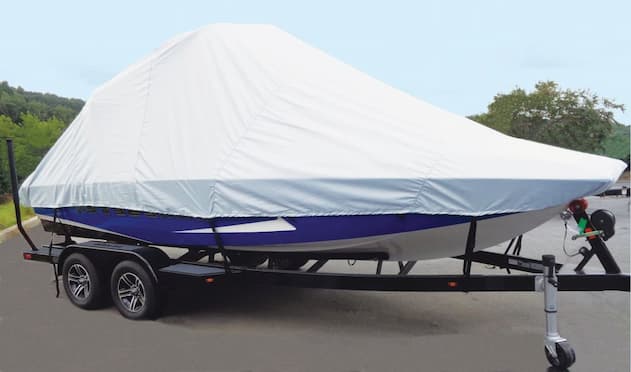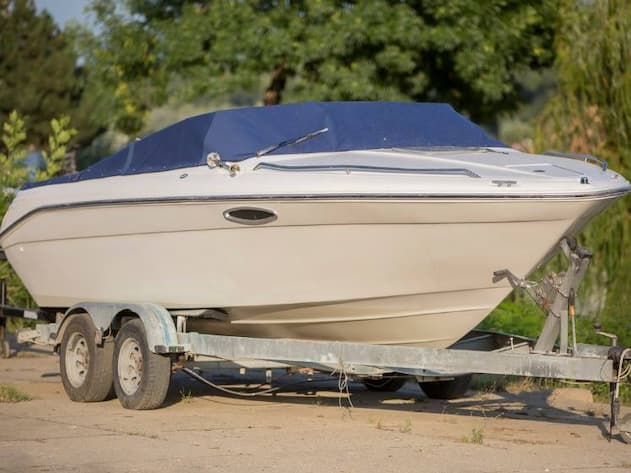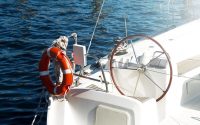Everything You Need to Know About Boat Covers: The Ideal Way to Protect Your Watercraft from the Elements
Boats can be an expensive investment and taking proper care of them is crucial. You don’t want to find a damaged boat after the winter is gone and you’re ready to set sail again. It’s your best friend in the water and keeping it well maintained and protected is a must.
Besides regular check-ups and maintenance, one of the best ways to keep your boat in good condition is by using a cover. It can protect your boat from bad weather, debris, animals, and more.
What Can You Cover Your Boat With?

Truth is, any old piece of fabric isn’t going to cut it. You need a durable and tough boat cover that will withstand the elements and any type of wear and tear. In this way, you can be sure that your boat will be well protected and last for years to come.
Mooring Covers
These covers are also known as summer storage covers and are specifically designed for boats that are not used in the summer. During this time the boat needs to be protected from wildlife, storms and fishermen. That’s why you’ll need to buy a high-quality boat cover when you leave it at the dock.
You don’t want to use these covers for travelling because they aren’t water resistant and can shed water. To avoid damage, this cover is made from breathable materials and has vents. This way the moisture can evaporate.
Travel Covers
As the name suggests, these covers are mainly designed to protect your boat when you’re travelling. They keep your boat safe while you’re on the road and moving at highway speeds thanks to their more streamlined shape and lower pitch.
The main benefit of a travel cover is that it’s easier to put on and take off, which is ideal if you’re doing it by yourself. Its design also makes it more aerodynamic, which can save you money on fuel costs.
Winter Storage Covers
These covers are made to resist the worst winter weather and keep your boat safe all winter. Compared to the others, they have a significantly higher pitch, and they feature a laminated material that makes it easier for snow and ice to fall off of it. It has a very durable frame that can withstand harsh winter winds and snowfalls.
Tie Down Covers
These are the old-school travel wraps. Tie-down covers require more time to set, but they are simpler to use if you have any problems with your hands. It’s not recommended to replace the tie-down ropes with bungee cords.
They can damage the boat by leaving marks on it and will let the cover move around the boat. This way the cover might get holes and your boat will get scratches. Since there is no trailer to attach them to, tie-down covers are only useful for transportation and are ineffective as mooring covers.
Snap-on Covers
Snap covers are a very popular kind because they’re more practical than tie-down ones. If you have any strength problems or issues with your hands, it’ll be harder for you to install them, but there are some instruments that can help you. There are grasp loops and toys that will make your job easier.
Other, related fastening mechanisms include J-clips and stay-put fasteners. Snap-on boat covers will work for summer storage, mooring or travelling.
Ratchet Strap Covers
These covers gained popularity because of their simplicity and the fast way they can be installed. All you need to do is put the cover over your boat and secure it with some ratchet straps that are included in the kit.
One of the main benefits of these covers is that they’re quite affordable. They’re also easy to store since they don’t take up a lot of space. However, they’re not as durable as some of the other types of covers and they might not protect your boat as well from bad weather or debris.
Things to Consider Before Buying

Apart from the type of cover, there are a few other things you need to take into account before making your purchase. More often than not, we tend to rush in and buy the first thing we see without giving it much thought. But if you want to make sure you’re getting the best possible value for your money, here are a few things to keep in mind:
The Climate You Live in
This is an important factor that shows what type of weather you have and will have a big influence on your final choice. If you live in an area with a lot of sunny days, and where is hot and humid, choose a breathable material. This way you’ll protect the boat from mould and mildew.
But for colder climates, breathable material won’t do the job. In this case, you need to get something strong that can hold piled-up snow without tearing up or damaging it.
Materials
The sort of material that’s used to make the boat cover is possibly the most vital factor to think about. Obviously, a material will endure longer if it’s of higher quality. The fabric must keep water out of the boat while also being permeable enough to allow any trapped moisture to escape.
Water-resistant fabrics should have fresh water-resistant coatings applied to them every few years whereas waterproof fabrics are the best at resisting water. However, unlike materials that are water-resistant, waterproof materials are not breathable.
That’s why a waterproof cover would be the best choice if you plan to store your boat in a cold location with a lot of rain and snow. A breathable cover for boats is a better option if the goal is to provide protection in hot, damp regions.
Strength and Durability
A boat covering is often removed and reinstalled, so the material needs to be durable while staying lightweight so you can handle it with ease. It’s better if the material is strong because you’ll use it for a longer time. But these materials are usually heavier, so you sometimes need to choose between lightweight and heavy and decide on how difficult you want the set-up to be.
Colour and Design
This is a simple task but it has a major influence on how your boat will look. Nowadays you can find so many different-coloured covers that the options are basically limitless. The best choice would be a light colour. Dark ones absorb more heat and try to avoid them if you live in hot climates. Plus, they’ll fade faster and give the cover a worn-out look in just a couple of weeks.



